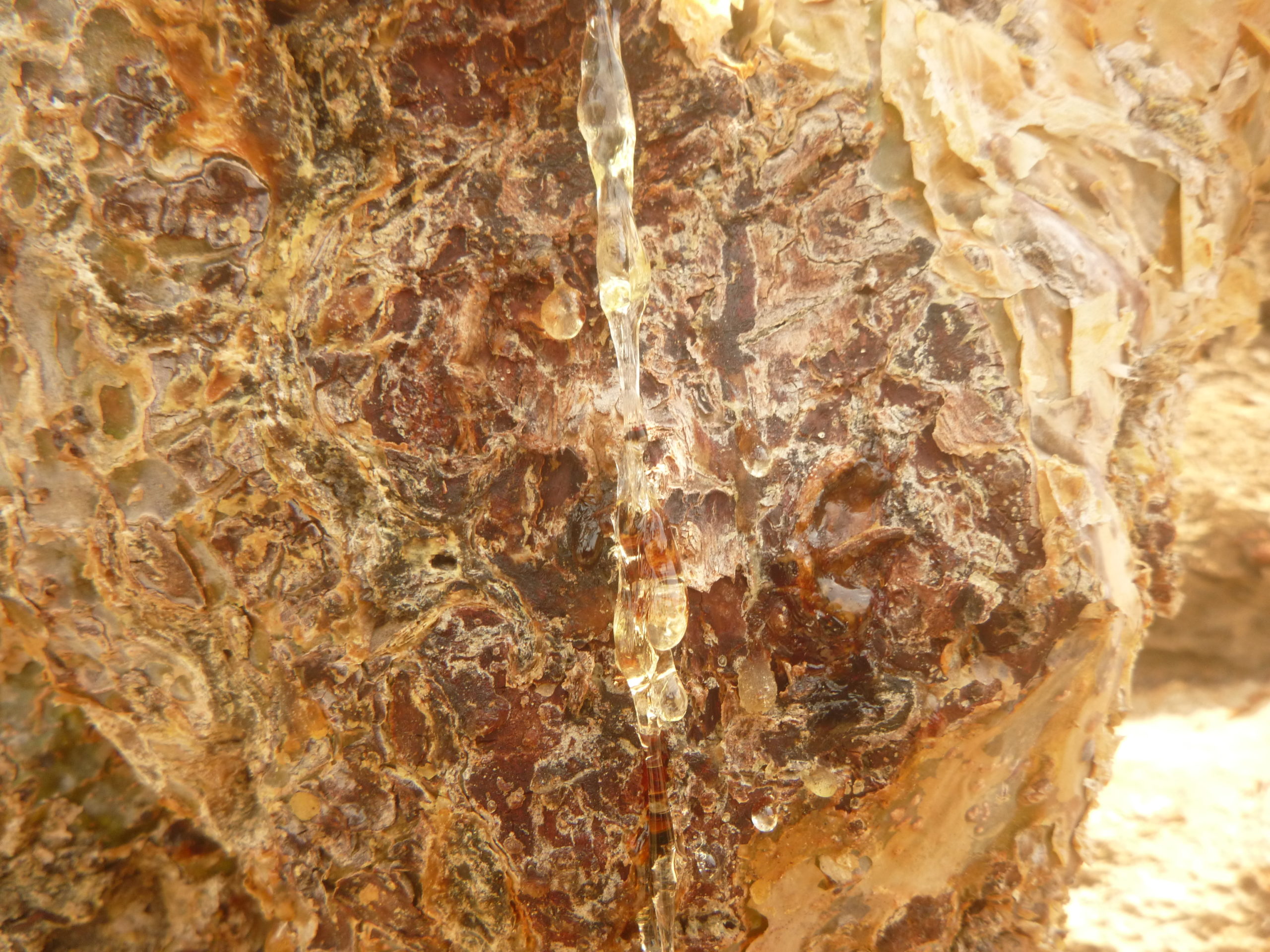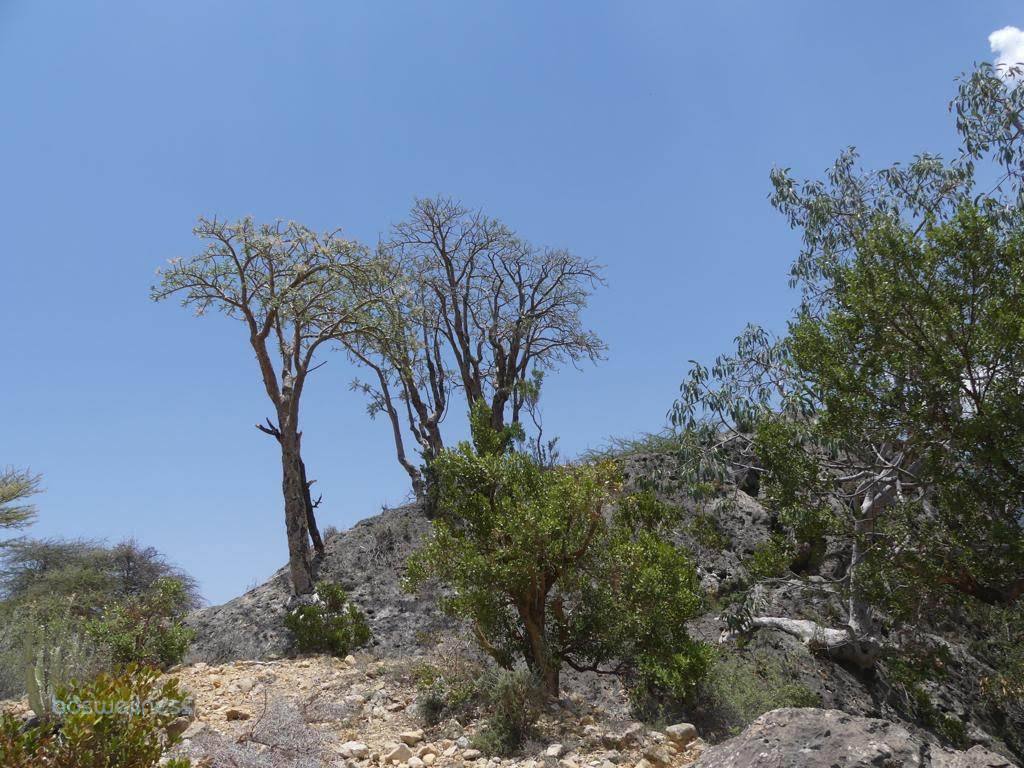
The rugged beauty of Somaliland’s Sanaag region serves as a steward and protector of these awe-inspring trees.
Somaliland’s frankincense grows in the Sanaag region in the northeast. This area is extremely remote, about a 2 day drive on rough roads from the capital city of Hargeysa. The region is home to the Golis mountain range, also known as the Cal Madow mountains. It is an extremely biodiverse area, with many endemic plants. While much of Somaliland is arid, the Golis Mountains receive more rain on average than the rest of the country. In addition to the rain, its close proximity to the Gulf of Aden benefits from fog, which is captured by the leaves of the Boswellia trees. The frankincense forests are lush and green compared to the dry and barren valleys below.
Have you ever considered what it’s like to visit the land where Boswellia trees grow? What is the landscape like? How remote it is? Well hop in and join us on a journey from sunrise in the capital of Hargeisa to the Golis mountains! The trip is long and arduous: 2 days driving on rough to non-existent roads without rest areas or fuel stations. You’re in luck as you can experience this voyage sped up from the comfort of your screen. The hospitality from the Somalis of these lands has thankfully provided us safe passage again. Please enjoy the adventure to this majestic region where the Boswellia trees grow.
Somalis have a well established method of determining ownership of Boswellia trees. They are passed down generationally on the father’s side. A family owning a particular swath of trees, know exactly which trees are theirs, and only harvest from their trees. This system of inheritance prohibits the sale of trees to anyone outside of the family, thus protecting generational wealth. Without this custom, the Boswellia trees would no doubt be highly sought by international corporations with commercial interests in frankincense. Somalis hold great reverence for their frankincense trees and are very protective of them. While deforestation is a problem throughout the country, as people seek fuel for cooking, the frankincense trees have escaped this threat due to the sacred place they hold in Somali culture.
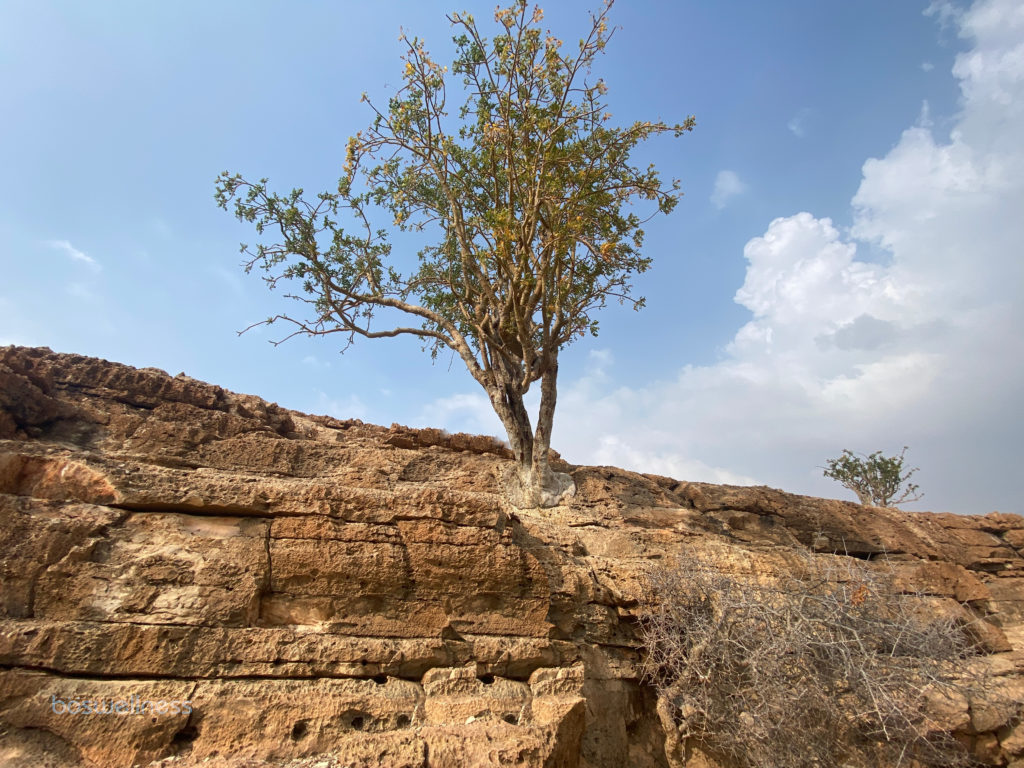
The Boswellia trees lack a traditional root system, instead growing out of limestone rock. It’s quite amazing actually to see how the base of the tree appears to stick to the rock. When the trees flower, and subsequently drop their seeds, the seeds fall into the many holes in the limestone, later emerging from the hole as a tiny green seedling. This is how they regenerate. They are not planted. In fact, people have tried to propagate these trees in soil, but with little success.
Boswellia carteri frankincense and Boswellia frereana frankincense, the two major types growing here, are harvested at different times throughout the year. The harvest season for Boswellia carteri is generally from June to September, but can be slightly shorter or longer depending on how much rain they are receiving. They will delay the harvest until the rainy season ends. The Boswellia frereana is harvested in the winter from December to March. To harvest, a frankincense collector will hike into the mountains to their trees. These mountains are extremely steep and the climb is arduous, therefore, collectors will camp there for the duration of their harvesting activities.
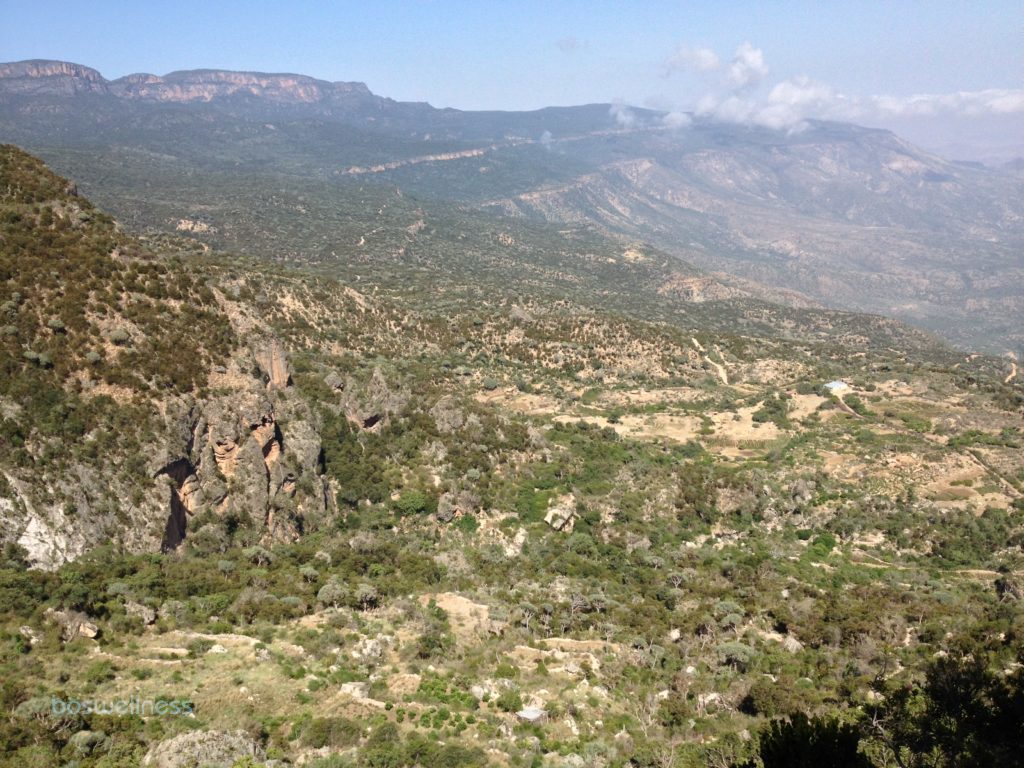
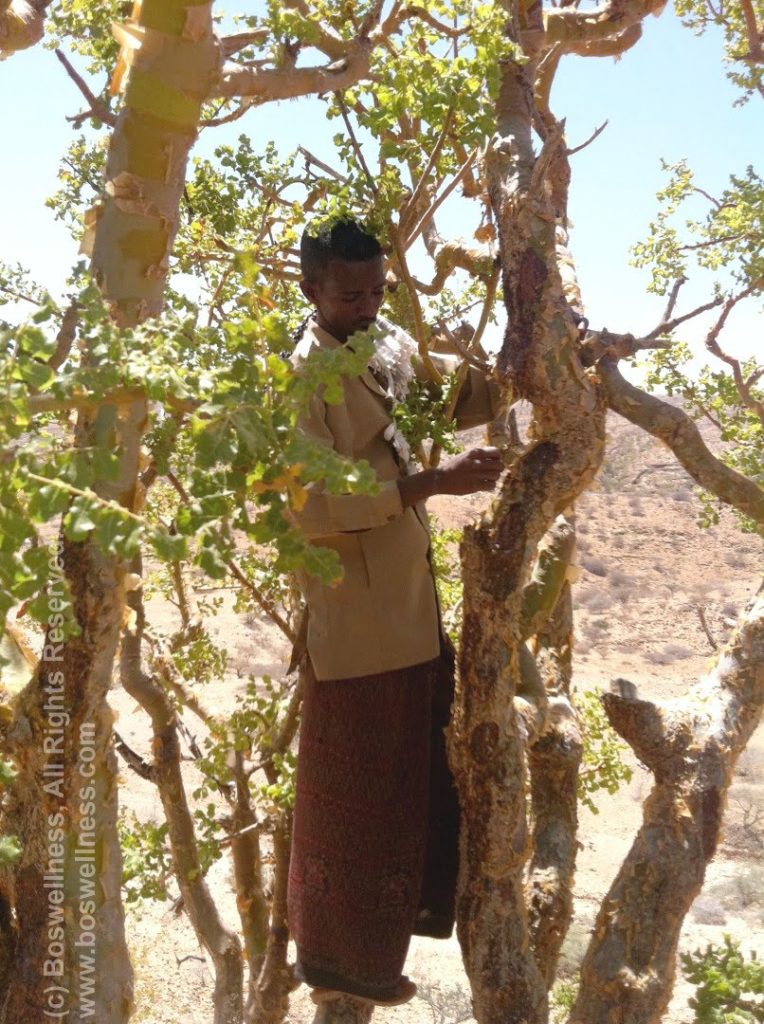
First, a harvester will make an incision in the bark of a mature frankincense tree using a tool called a mangaf. They do this skillfully, without harming the tree. From this incision, the sap of the tree will eventually seep out, forming “tears”, which will drip down the trunk and harden. This sap is the tree’s defense mechanism against disease and infection, like a bandage that covers the incision while the “wound” heals. After a couple weeks, the harvester will return to their trees to collect the hardened resin. They store the collected bags of resin in caves to protect them from the sun, as they continue to collect all of their frankincense over several days. From there, the bags of resin are carried down the mountain, into the village where they will be cleaned of bark pieces and sorted by tear size.
It’s important to remember how much hard work goes into frankincense production, and therefore how precious these resins are and how grateful we are to have access to them. The job of harvesting is not only physically demanding, but can also be dangerous. Each year, some harvesters are injured, sometimes critically, while collecting resin from a tree perched precariously on a cliff. We honor these harvesters by providing for their needs: livable wages and solar powered wells in their villages. We’ve cultivated a mutual respect for one another, built on years of in-person collaboration and communication.
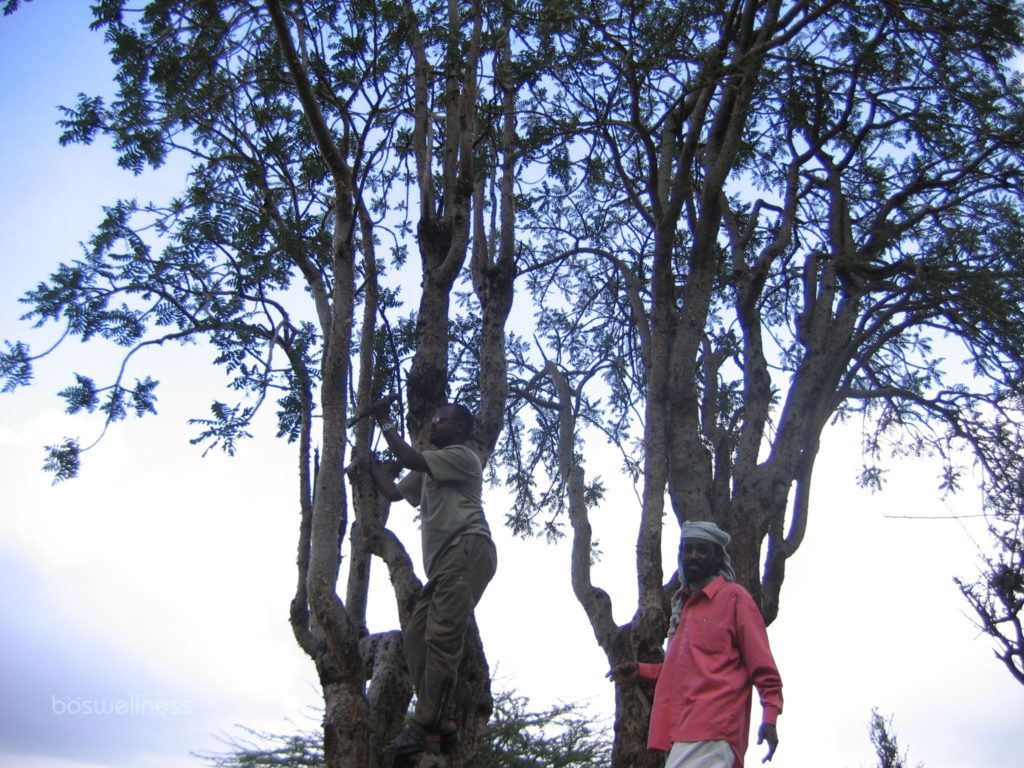
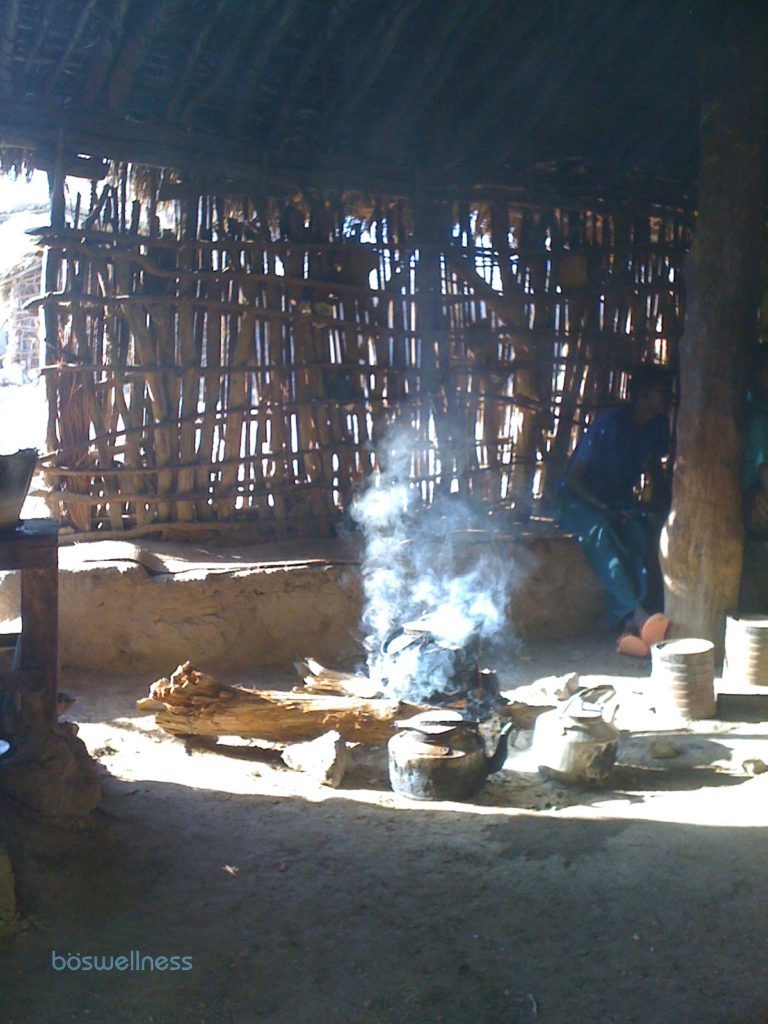
In Somaliland, every household has frankincense resin. They burn it daily to perfume their home, purify the air, and keep mosquitos at bay. Boswellia frereana resin is used as a natural chewing gum. It helps keep teeth and gums healthy while also promoting digestion.
As told by Boswellness’s founder, Mahdi, Commiphora myrrha resin was used to make the ink he used for writing when he attended Quranic school. Myrrh resin would be soaked in water until it became a paste, then it was mixed with charcoal to create the ink. In Somalia and Somaliland, myrrh is used to treat stomach aches, mouth ulcers, wounds, inflammatory disease, and in post-natal care.
Please meet Harvester Abdillahi Mohamed Yoonis and a Boswellia carteri tree with Boswellness Founder Mahdi Ibrahim
Frankincense blessings and houses in the Harvesters’ village of Raqaas
From Tree to the Bottle, Boswellia frereana with Mahdi and a Harvester
Please enjoy an aerial view of one of the Harvesting Regions!
